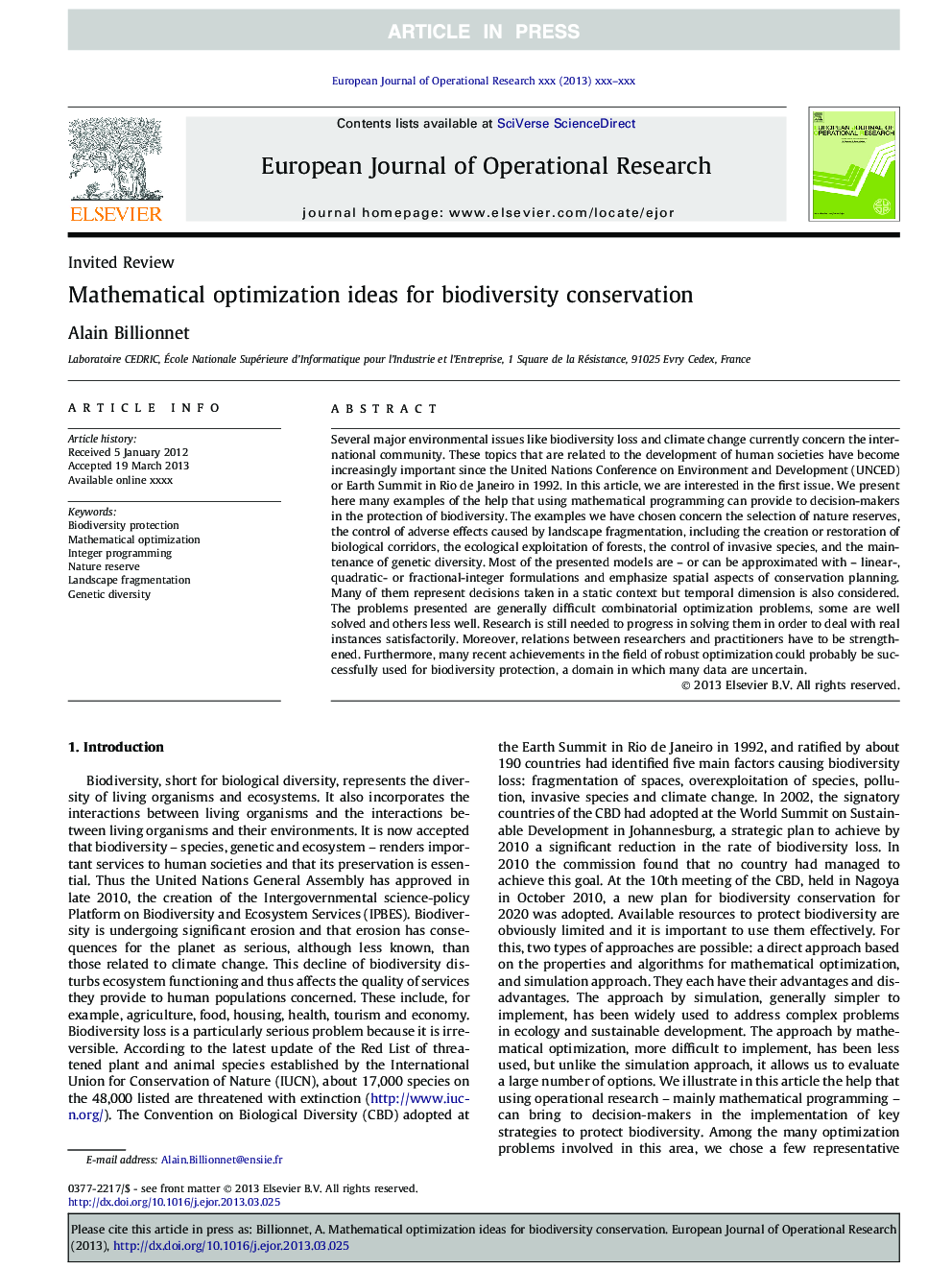| Article ID | Journal | Published Year | Pages | File Type |
|---|---|---|---|---|
| 6897748 | European Journal of Operational Research | 2013 | 21 Pages |
Abstract
Several major environmental issues like biodiversity loss and climate change currently concern the international community. These topics that are related to the development of human societies have become increasingly important since the United Nations Conference on Environment and Development (UNCED) or Earth Summit in Rio de Janeiro in 1992. In this article, we are interested in the first issue. We present here many examples of the help that using mathematical programming can provide to decision-makers in the protection of biodiversity. The examples we have chosen concern the selection of nature reserves, the control of adverse effects caused by landscape fragmentation, including the creation or restoration of biological corridors, the ecological exploitation of forests, the control of invasive species, and the maintenance of genetic diversity. Most of the presented models are - or can be approximated with - linear-, quadratic- or fractional-integer formulations and emphasize spatial aspects of conservation planning. Many of them represent decisions taken in a static context but temporal dimension is also considered. The problems presented are generally difficult combinatorial optimization problems, some are well solved and others less well. Research is still needed to progress in solving them in order to deal with real instances satisfactorily. Moreover, relations between researchers and practitioners have to be strengthened. Furthermore, many recent achievements in the field of robust optimization could probably be successfully used for biodiversity protection, a domain in which many data are uncertain.
Keywords
Related Topics
Physical Sciences and Engineering
Computer Science
Computer Science (General)
Authors
Alain Billionnet,
